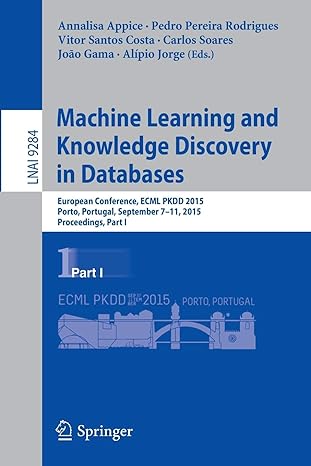Answered step by step
Verified Expert Solution
Question
1 Approved Answer
We have two mass storage devices, A and B with the same specs. Each canstore N bits, but read / write operations are slow. We
We have two mass storage devices, A and B with the same specs. Each canstore N bits, but readwrite operations are slow. We mitigate this problemby turning the two devices into a storage array: data is alternatinglywritten to A and B The array can now store N bits, and read andwrite at almost twice the speed of the individual devices, assuming thatthe time it takes to send data to A and B is negligible, compared to thetime it takes each device to write the data.There is however a flaw in this plan. Since data is distributed over twodevices, the total chance of failure has now doubled. The failure of justone device causes the failure of the array.We could eliminate this problem by copying all of As data redundantlyto an additional devices C and all of Bs data to an additional deviceD. This insures against single and double drive failure, but at the cost ofdoubling the required amount of storage devices.We decide that simultaneous drive failure is sufficiently unlikely to ignorethat possibility, and we will guard against data loss from single drivefailure only. This requires only one extra device C as follows:cR Boerner, ASU School of Mathematical and Statistical SciencesMAT Week Written HomeworkWe abstract each device as a list of bits, A a a aN B b b bNand C c c cN At the time the data is written to drive A and B a checksum is alsowritten to drive C according to:ck ak XOR bkfor each k N Here, XOR is the bitwise exclusive or operation.For example, all this means that if the original file is thenA stores and B stores and C stores Make sure youunderstand this example. If not, you are not understanding this question,and cannot answer it correctly.a points Assume that after the data has been written to drives AB and C as explained above, drive A is destroyed. Only drives Band C are left. Explain how each bit ak can be reconstructed fromthe knowledge of bk and ck Your explanation must be specific anddetailed. It is insufficient to declare that A can be reconstructedfrom B and C or such.Hint: consider the four cases for bk ck : and Explain in each case how ak can be reconstructed.b points Would the same reconstruction property still hold if thedata on drive C had been written according to: ck ak AND bk foreach k N You must fully explain your answer.c points Would the same reconstruction property still hold if thedata on drive C had been written according to: ck ak OR bk foreach k N You must fully explain your answer.
Step by Step Solution
There are 3 Steps involved in it
Step: 1

Get Instant Access to Expert-Tailored Solutions
See step-by-step solutions with expert insights and AI powered tools for academic success
Step: 2

Step: 3

Ace Your Homework with AI
Get the answers you need in no time with our AI-driven, step-by-step assistance
Get Started


